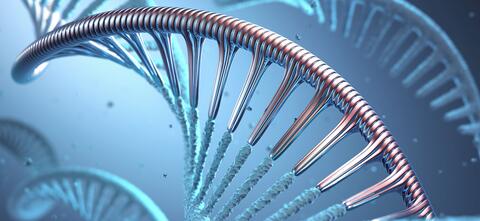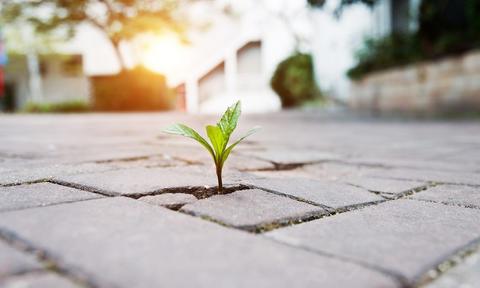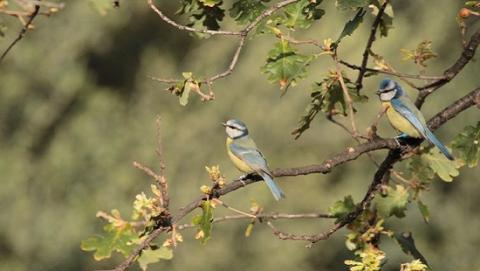
"We Have to Include Nature at the Design Table": Interview with a Biomimicist
Ayla Kiser is an expert in biomimicry and a guest associate professor at Sorbonne University.
We spoke with her to learn more about the emerging field of biomimicry, and its power to offer creative solutions to some of humanity’s biggest challenges. In our interview, Kiser explains how learning from nature can powerfully reshape our approach to innovation and sustainability.
Could you tell us about the workshop you run at Sorbonne University?
AK: I’ve been teaching an annual biomimicry workshop since 2019, and I’d love to see it offered more because I really believe biomimicry has to play a role in our future. Biomimicry is about solving the challenges we face in human society by learning from and emulating the mechanisms and strategies already perfected by nature. Life has been on Earth for 3.8 billion years, so nature has had a lot of time to evolve efficient, resilient solutions. The answers to so many of the challenges we’re facing today—like climate change, pollution, scarcity—are already there, waiting for us in nature. The workshop I teach is interactive, including group games and a mini project through which students learn the fundamentals, benefits, and basic process of biomimicry. I actually used biomimicry to design the workshop, and it gets very high ratings from the students every year.
How did you become interested in biomimicry?
AK: Honestly, I can’t remember exactly when I first heard the term “biomimicry.” But as soon as I learned what it was, it just made sense. While I was a PhD student in environmental engineering, I taught some courses and made sure to teach my students about biomimicry. I could see their eyes light up as I explained the concept. It felt so intuitive to them, just like it did to me. I mean, why wouldn’t we learn from nature? It’s been solving challenges for billions of years!
Is biomimicry a new concept?
AK: Well, many indigenous cultures have stayed deeply connected to nature and live in tune with seasonal cycles, using local materials in ways that are incredibly sustainable. I think we’ve lost a lot of this wisdom along the way, especially in Western society since the Industrial Revolution. Thankfully, there are more people now saying, “Hey, we need to pay attention to these cultures that have cultivated knowledge over centuries.”
In Europe, Leonardo da Vinci and Antoni Gaudi are great examples of innovators who were deeply inspired by nature. In the United States in the 1950s, Otto Schmitt coined the term “biomimetics” after he developed a type of electronic circuit that was inspired by the nervous system of squids. So, biomimicry is not a new concept, and yet most people today do not know what it is.
Could you share a successful example of biomimicry in action?
AK: Sure! One of the classic examples—and anyone in biomimicry will have heard this one—is Velcro. An engineer named Georges de Mestral noticed how burrs would stick to his dog’s fur when they were out hiking. He took one of those burrs, looked at it under a microscope, and saw these little hooks that latched onto the loops in the fur. He spent the next ten years developing his discovery into a product, and today, we have Velcro!
Another fascinating example comes from a Paris-based company called Tissium, originally known as Gecko Biomedical. They created a biodegradable surgical adhesive inspired by the sandcastle worm. These worms live in intertidal zones and build their homes by gluing sand together, grain by grain, using a special adhesive that works underwater. For years, humans struggled to create an adhesive that could work in dynamic, wet environments—like a beating heart. But by studying the sandcastle worm, researchers developed an adhesive substance that works perfectly in those conditions and effectively repairs defects of the heart and blood vessels.
What has been your experience working with biomimicry in industry?
AK: I worked in the consumer sector at Johnson & Johnson, where I used biomimicry to create new or improved designs for skin health, baby care, oral care, self-care, and sustainability. Biomimicry really helped us think differently about the problems we were facing. We were able to design more solutions, faster, and always with the intention of being good for the planet. And my colleagues who worked with me in biomimicry felt inspired, more creative, and more connected to nature; their job satisfaction increased.
You mentioned that nature’s solutions feel intuitive to students. Do you think this connection to nature runs deeper, maybe even on an emotional level?
AK: Definitely. Reconnecting with nature goes beyond just the practical—it can be deeply emotional. When I really immerse myself in nature, I feel this profound comfort and sense of belonging. I believe it’s because, as humans, we’re part of nature, too.
For most of human history we’ve been in direct relationship with nature. There’s even the biophilia hypothesis, which proposes that it’s encoded in our DNA to find comfort and beauty in nature. Of course, there are dangers in nature, but in general, we’re wired to feel connected there. I think that separating ourselves from natural environments has had consequences for us as human beings.
Biomimicry clearly has a lot of potential for sustainability. How can it reshape our approach to sustainable design?
AK: Biomimicry shows us that productivity and sustainability are not mutually exclusive. In nature, we see sustainable innovation at its finest. Ecosystems are incredibly productive and continuously regenerate – they sequester carbon dioxide, produce oxygen, manage water, biodegrade and recycle everything, and perform numerous other services. There’s a company, Newlight Technologies, that’s doing incredible work in this space. They’ve developed a way to capture carbon dioxide and use it as a raw material, inspired by how ocean microorganisms eat CO2 and turn it into sugars or other substances they need to survive. This company makes biodegradable biobased plastics by turning CO₂ from a pollutant into a feedstock. So, not only are they solving the problem of pollution from non-biodegradable plastic, they’re also sequestering CO₂. It’s a shift from “How can we do less harm?” to “How can we do more good?”
Do you think biomimicry can become a mainstream career path for students?
AK: Biomimicry is still in the early stages, but I think there’s a growing interest. More companies are starting to see its potential, and more case studies are showing that it can be applied to create real-world solutions. I hope that companies will start hiring interns and consultants to explore biomimetic approaches. My dream is for more students to get exposure to this concept, so that they enter their fields knowing there’s this entire toolkit of nature-inspired solutions they can draw on. That’s why I teach the biomimicry workshop at Sorbonne.
Where do you see biomimicry going in the future?
AK: My hope is that biomimicry will have a seat at the table in every major industry. We must include nature at the design table when we’re trying to solve problems. If we only look to human-made solutions, we’re missing out on a vast, time-tested source of knowledge. I think we’re shortsighted if we don’t include nature in our problem-solving toolkit. Biomimicry has to be part of our approach to tackling grand challenges like climate change and biodiversity loss. It has so much potential for helping us become more innovative while also being sustainable. And last but not least, biomimicry gives us much-needed hope because the solutions we need already exist in nature.


